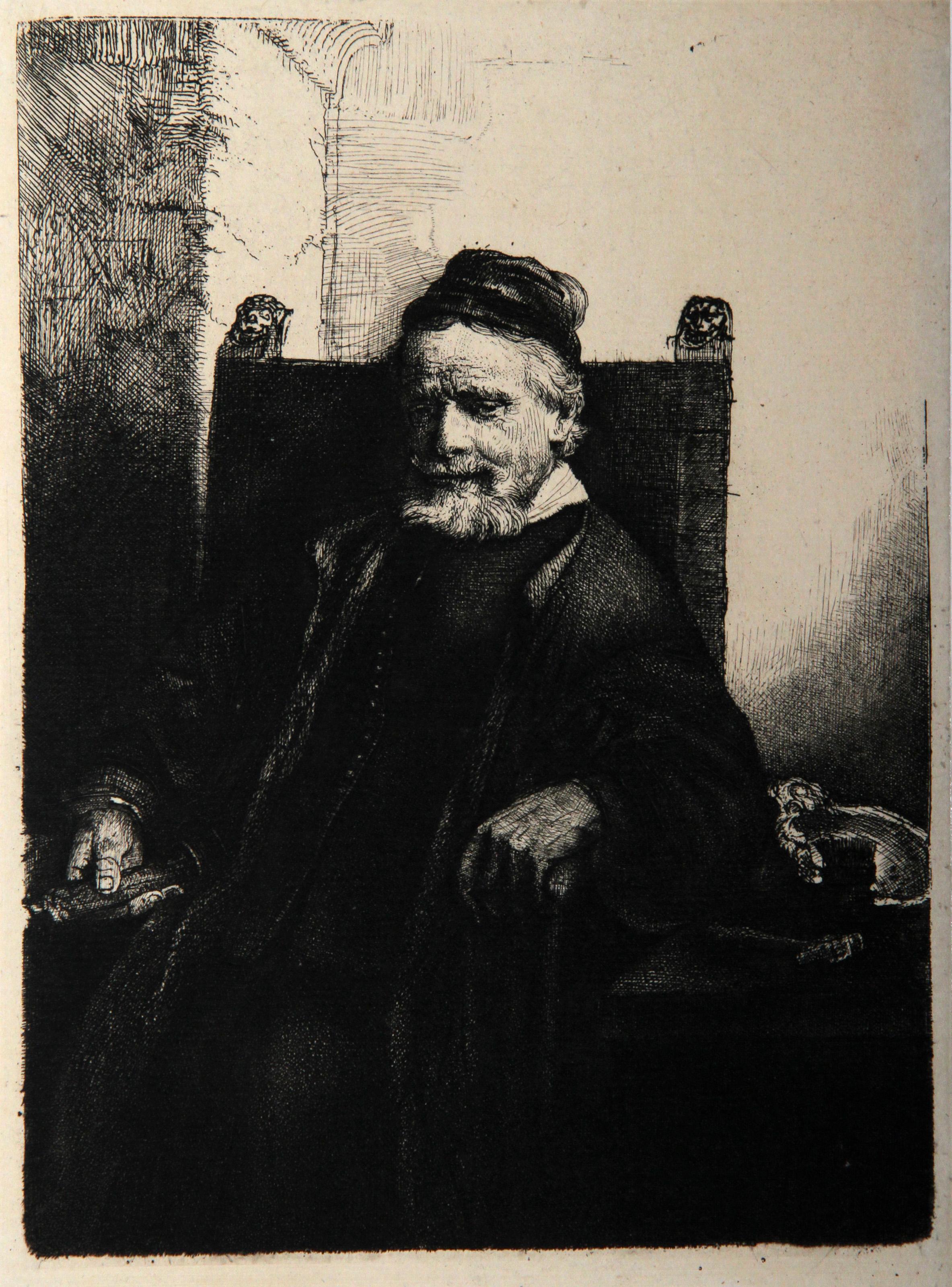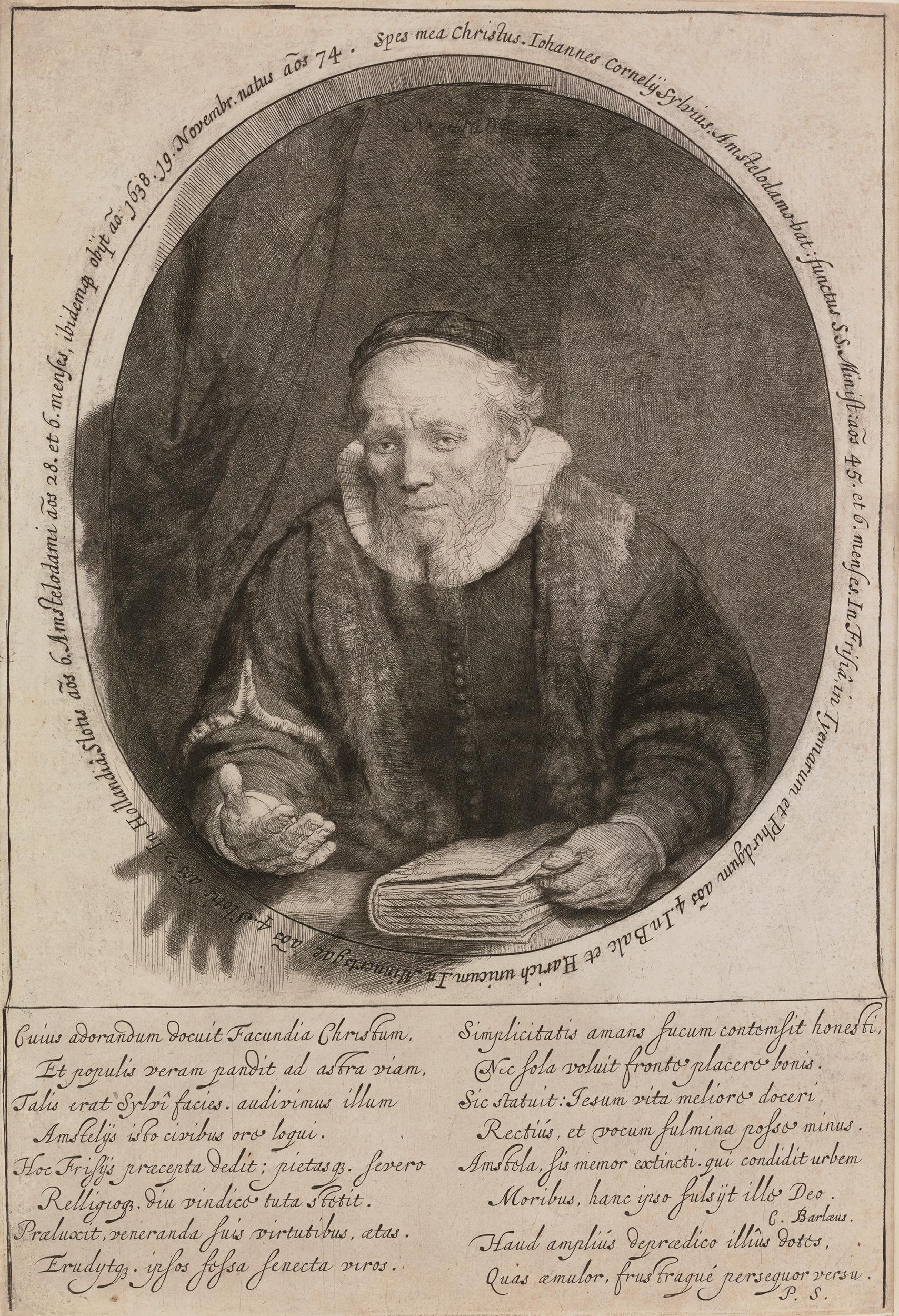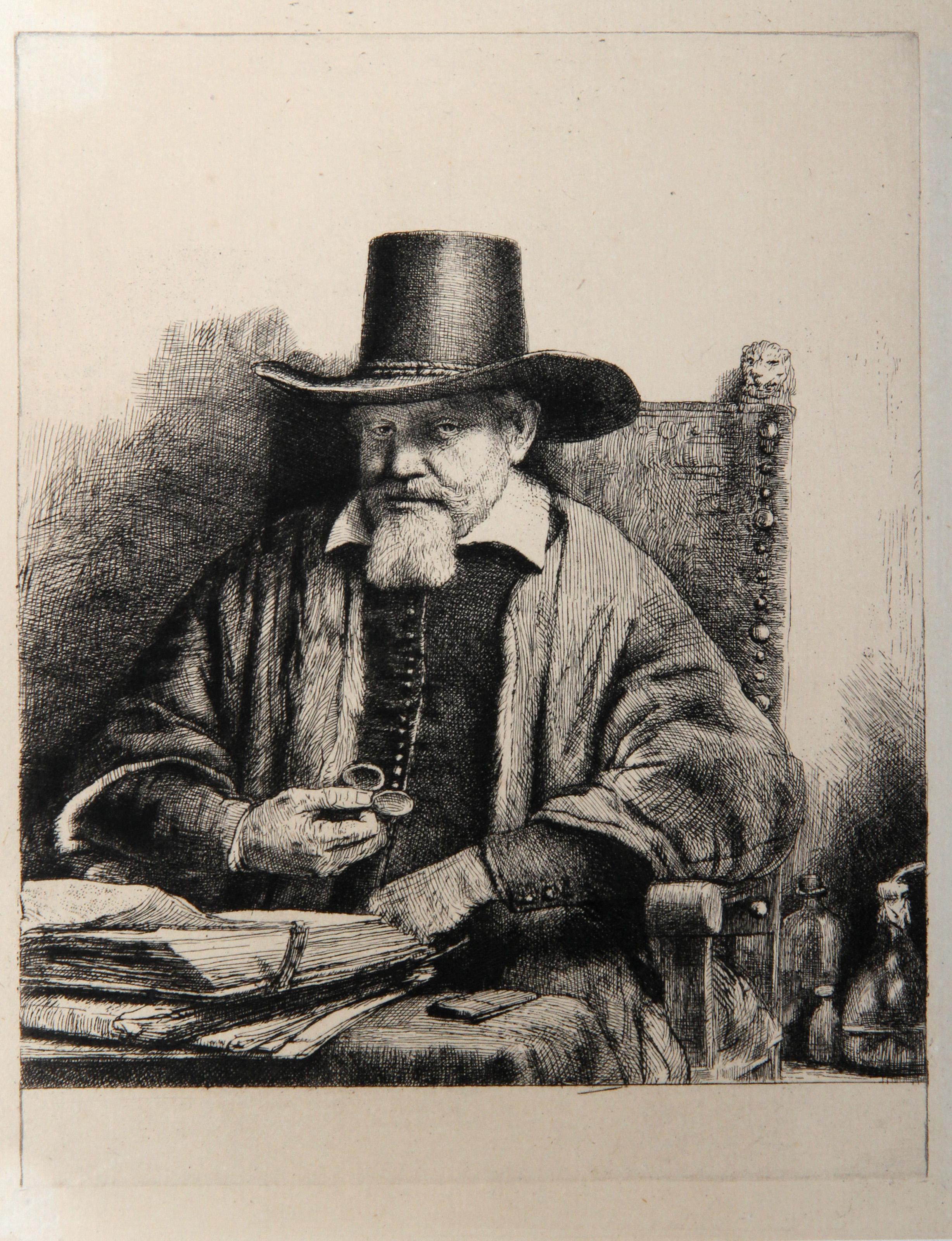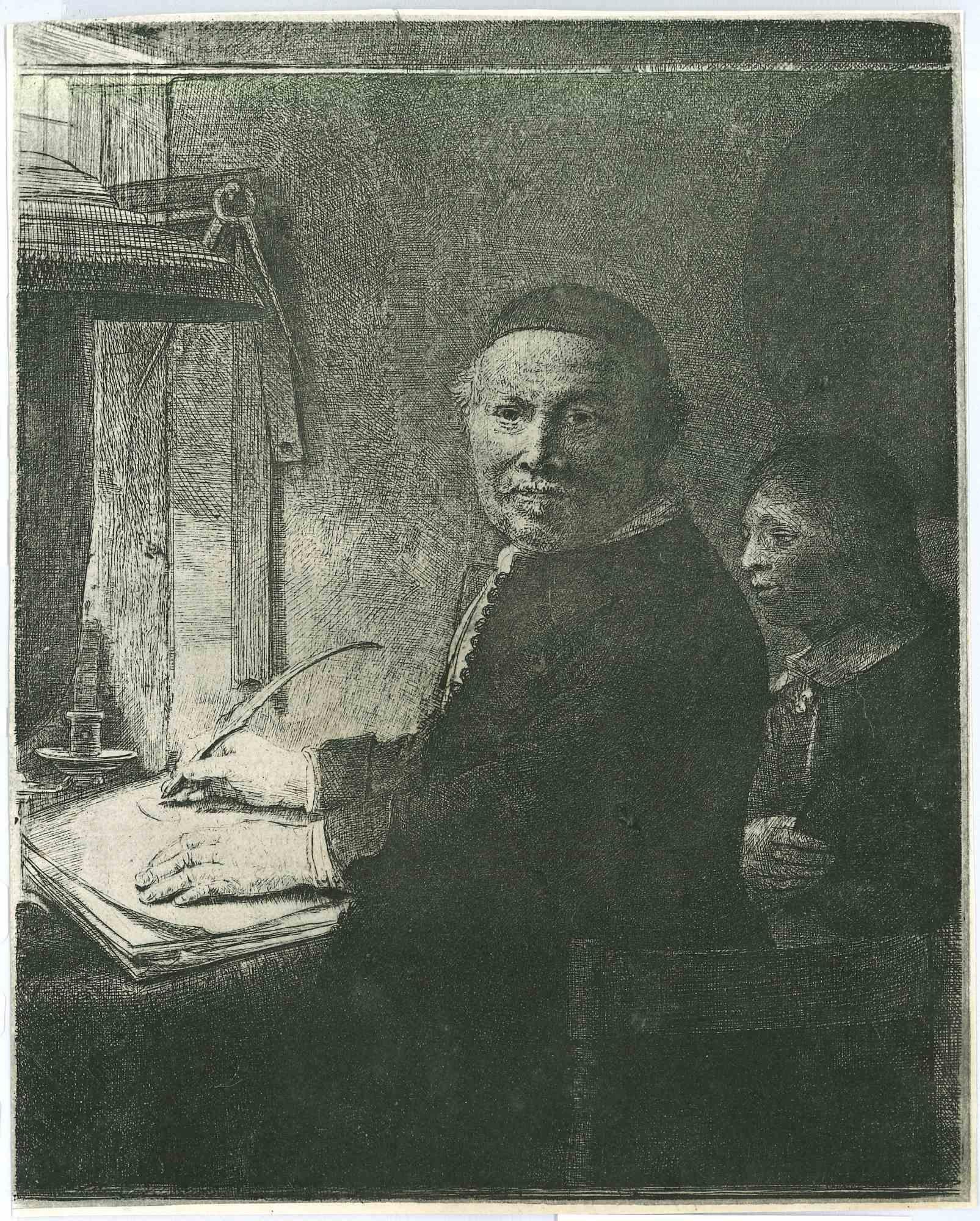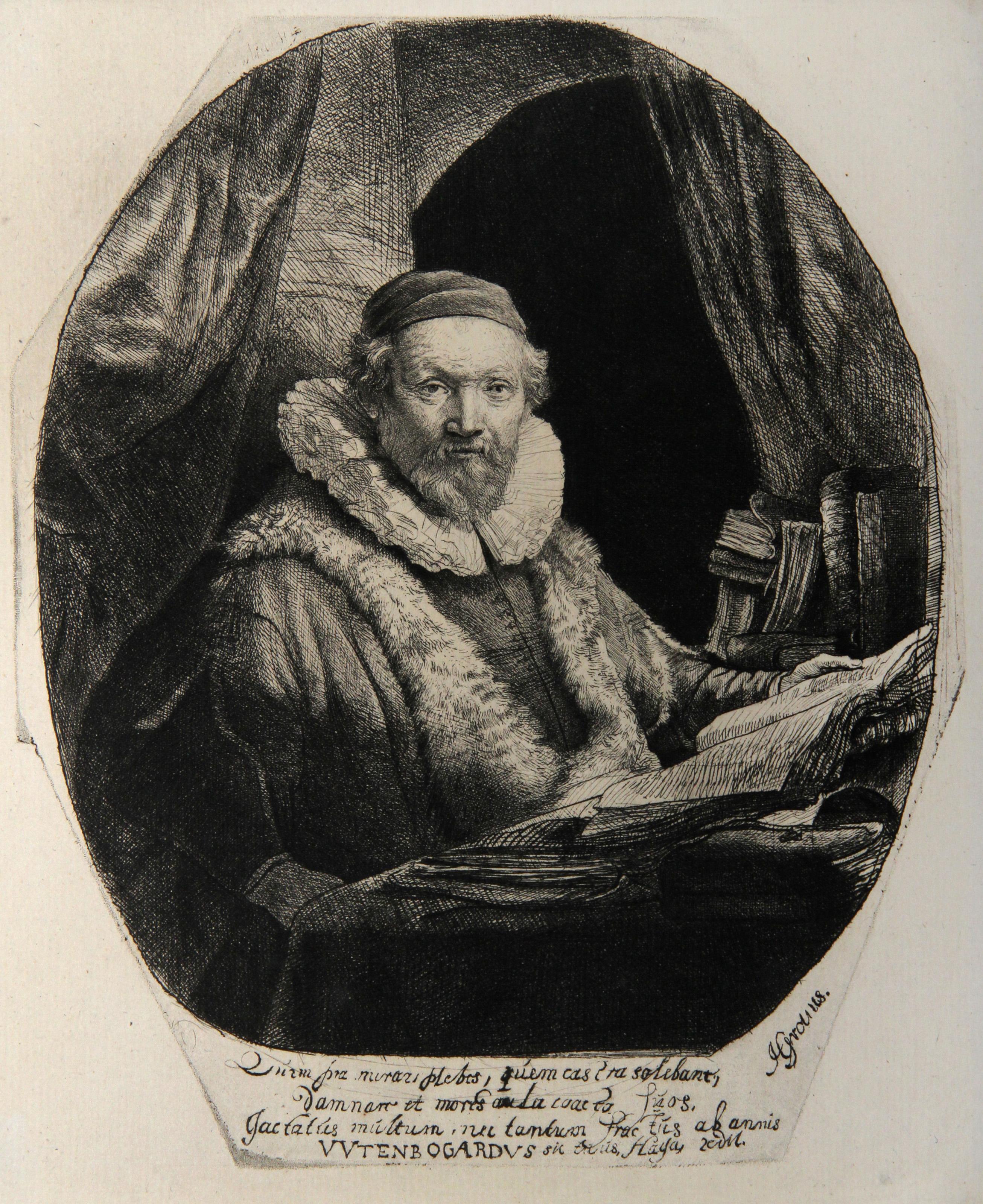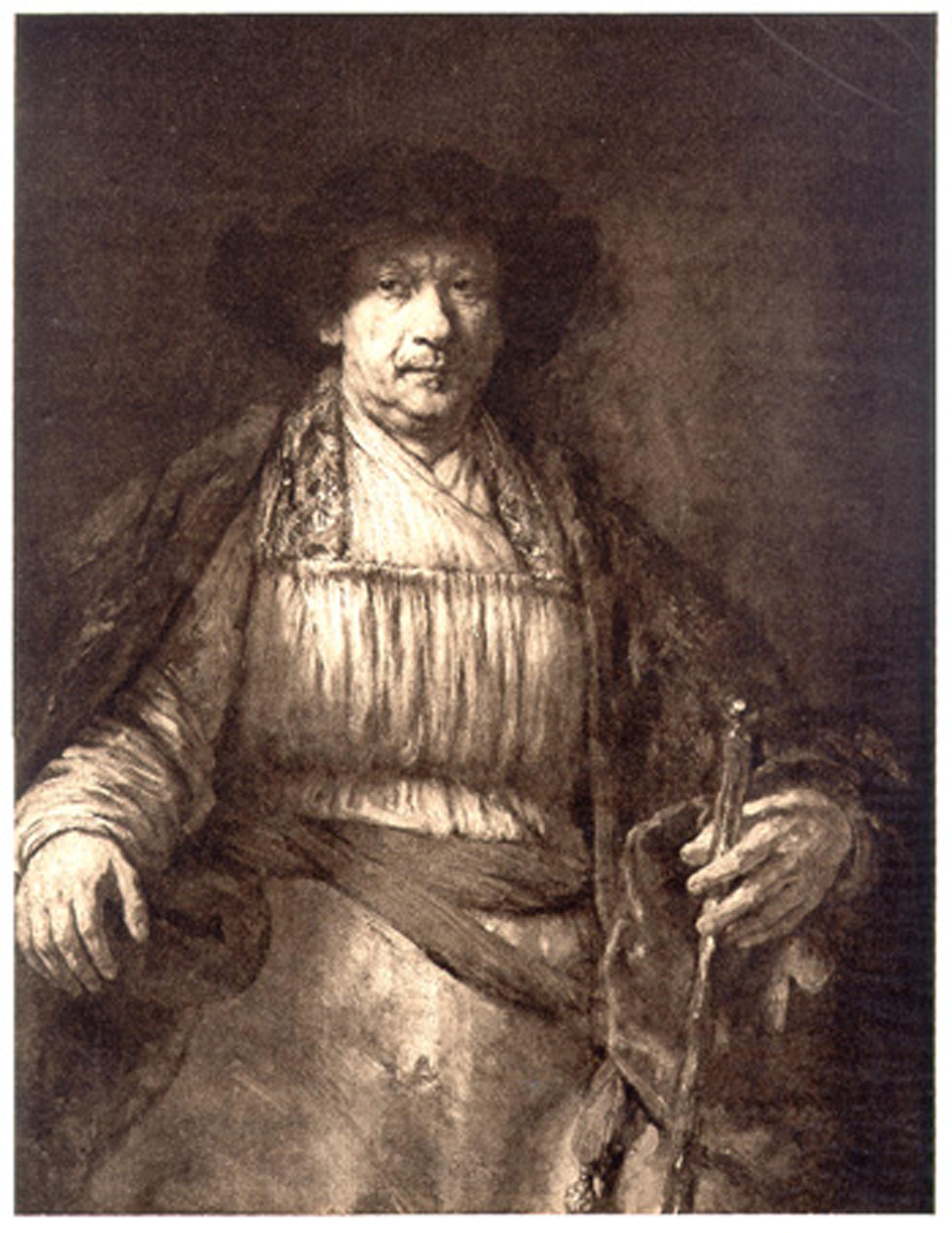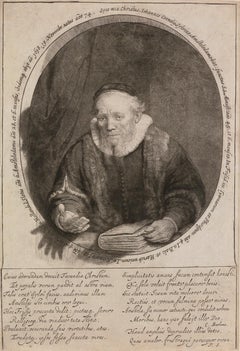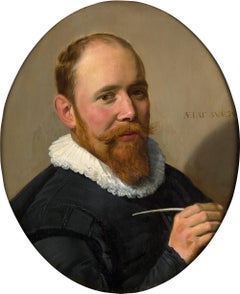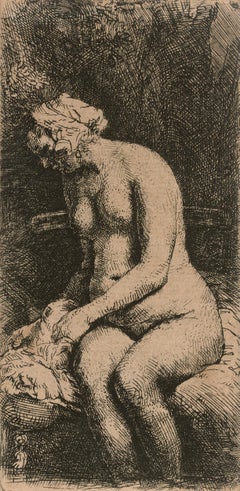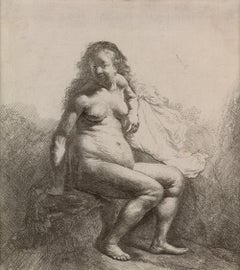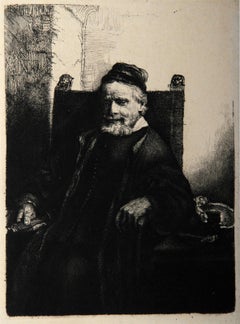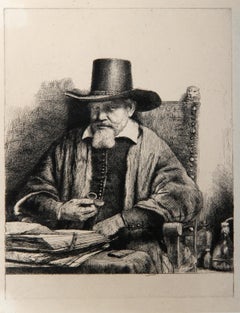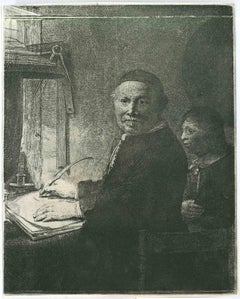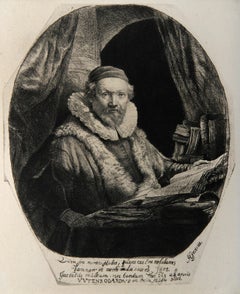Items Similar to Jan Lutma, Goldsmith by Rembrandt van Rijn
Want more images or videos?
Request additional images or videos from the seller
1 of 8
Rembrandt van RijnJan Lutma, Goldsmith by Rembrandt van RijnCirca 1656
Circa 1656
$38,500
£29,578.12
€33,984.93
CA$54,155.02
A$60,840.74
CHF 31,789.38
MX$742,589.65
NOK 403,632.26
SEK 379,934.74
DKK 253,608.17
About the Item
Rembrandt van Rijn
1606-1669 Dutch
Jan Lutma, The Goldsmith
Etching, engraving, and drypoint on paper
New Hollstein’s second state of five
Signed and dated “Rembrandt / F. 1656” (upper center)
This monumental etching is a highly significant work by the Dutch Old Master Rembrandt van Rijn (1606–1669). It is one of nearly 300 authenticated prints that Rembrandt produced during his lifetime, demonstrating his mastery of the intaglio printmaking technique. The artist's innovative use of etching, drypoint and engraving to create a wide range of tonal effects was unprecedented during his time and revolutionized the world of printmaking.
Here, Rembrandt renders his subject, Jan Lutma, with a sliver of a smile, resting comfortably in his chair. Master gold and silversmith Johannes Lutma was a well-known figure in Amsterdam society who befriended many artists, including Rembrandt. In this sensitive portrait, the elderly craftsman is seated in an elaborate carved armchair, surrounded by the tools and creations of his trade, including a hammer and a pot containing punches along with a chased-silver bowl.
During his lifetime, Lutma received several important official commissions, though he is best known for the tulip beaker he created in 1652 for Nicolaas Tulp, whose anatomy lesson was immortalized in a painting by Rembrandt in 1632. In 1656, Lutma recovered from a temporary deterioration of his eyesight. It is thought that he may have commissioned the print as an announcement that he was still (or again) working in the craft that had brought him fame and fortune.
Rembrandt utilizes a subtle play of warm, diffused light from the window to cast elegant naturalistic shadows across Lutma’s countenance. He added drypoint over an already dense web of finely etched lines, creating depth and dimension. By altering the direction and strength of the lines, he created subtle distinctions between the deep velvety black of his sitter’s clothing and the glow of the light filtering from the top of the room. This unique etching showcases Rembrandt’s mastery over rendering light and shadow in etching and engraving.
The son of a miller, Rembrandt van Rijn is believed to have been born in Leiden on July 15, 1606. He studied first at the Latin School and was then enrolled at the University of Leiden at the age of 14. He soon left to study art—first with a local master, Jacob van Swanenburch, and then, in Amsterdam, with Pieter Lastman, known for his historical paintings. Rembrandt was an exceptionally gifted student and mastered his craft in a mere six months. At 22 years old, he returned to Leiden and was soon so highly regarded that he was able to take students of his own.
Though known today primarily for his paintings, Rembrandt’s fame spread outside of the Netherlands thanks to his etchings. He made hundreds of etchings over the course of his career from 1626 until 1660, the year he was forced to sell his presses. He created etchings of numerous subjects, including self-portraits, biblical subjects, saints and allegories, and his work was avidly admired and collected, even during his lifetime.
According to New Hollstein, this etching is likely the highly desirable second/third state of this rendering based on the addition of an inscription reading “F. Lutma Ex.” in the densely worked area at the lower right. Versions of this etching reside in several museums, including the Metropolitan Museum of Art in New York, the Uffizi Gallery in Florence, the Art Institute of Chicago, and more.
Etched circa 1656
Paper: 7 3/4" high x 5 3/4" wide (19.69 x 14.61 cm)
Frame: 20 1/4" high x 16 1/4" wide x 1" deep (51.44 x 41.28 x 2.54 cm)
References:
Bartsch 276
The New Hollstein Dutch 293, Second state (of V)
Provenance:
Private collection, The Netherlands
M.S. Rau, New Orleans
- Creator:Rembrandt van Rijn (1606 - 1669, Dutch)
- Creation Year:Circa 1656
- Dimensions:Height: 20.25 in (51.44 cm)Width: 16.25 in (41.28 cm)Depth: 1 in (2.54 cm)
- Medium:
- Movement & Style:
- Period:
- Condition:
- Gallery Location:New Orleans, LA
- Reference Number:Seller: 32-10901stDibs: LU18616516042
Rembrandt van Rijn
Rembrandt was the most influential 17th Century Dutch painter. After years of early success as a portrait painter, his life was beset by financial hardship and personal tragedy. He continued to paint portraits and develop etchings. Rembrandt's portraits of his contemporaries, self-portraits and illustrations of scenes from the Bible are regarded as his greatest creative triumphs. His self-portraits form a unique and intimate autobiography, in which the artist surveyed himself without vanity and with the utmost sincerity. Like many artists of the Dutch Golden Age, such as Jan Vermeer of Delft, Rembrandt was also an avid art collector and dealer. Rembrandt never went abroad, but he was considerably influenced by the work of the Italian masters and Netherlandish artists who had studied in Italy, like Pieter Lastman, the Utrecht Caravaggists, Flemish Baroque, and Peter Paul Rubens. Rembrandt's foremost contribution in the history of printmaking was his transformation of the etching process from a relatively new reproductive technique into a true art form, along with Jacques Callot. His reputation as the greatest etcher in the history of the medium was established in his lifetime and never questioned since. Few of his paintings left the Dutch Republic while he lived, but his prints were circulated throughout Europe, and his wider reputation was initially based on them alone.
About the Seller
5.0
Vetted Professional Seller
Every seller passes strict standards for authenticity and reliability
Established in 1912
1stDibs seller since 2013
17 sales on 1stDibs
Typical response time: 11 hours
- ShippingRetrieving quote...Shipping from: New Orleans, LA
- Return Policy
Authenticity Guarantee
In the unlikely event there’s an issue with an item’s authenticity, contact us within 1 year for a full refund. DetailsMoney-Back Guarantee
If your item is not as described, is damaged in transit, or does not arrive, contact us within 7 days for a full refund. Details24-Hour Cancellation
You have a 24-hour grace period in which to reconsider your purchase, with no questions asked.Vetted Professional Sellers
Our world-class sellers must adhere to strict standards for service and quality, maintaining the integrity of our listings.Price-Match Guarantee
If you find that a seller listed the same item for a lower price elsewhere, we’ll match it.Trusted Global Delivery
Our best-in-class carrier network provides specialized shipping options worldwide, including custom delivery.More From This Seller
View AllJan Cornelis Sylvius, Preacher by Rembrandt Van Rijn
By Rembrandt van Rijn
Located in New Orleans, LA
Rembrandt van Rijn
1606–1669 Dutch
Jan Cornelis Sylvius, Preacher
New Hollstein Dutch and Flemish (Rembrandt) 235, state 2/2
Bartsch 280
Printed by Rembrandt
Signed and dated "Rem...
Category
17th Century Old Masters Portrait Drawings and Watercolors
Materials
Paper, Etching
Portrait Of A Gentleman By Frans Hals
Located in New Orleans, LA
Frans Hals
1582-1666 Dutch
Portrait of a Gentleman
(possibly Theodore Blevet)
Oil on panel
“Frans Hals is a colourist among the colourists...Frans Hals must have had twenty-seven blacks...
Category
17th Century Old Masters Portrait Paintings
Materials
Oil, Panel
Price Upon Request
Woman Bathing Her Feet in a Brook by Rembrandt van Rijn
By Rembrandt van Rijn
Located in New Orleans, LA
Rembrandt van Rijn
1606-1669 Dutch
Woman Bathing Her Feet in a Brook
Etching on paper
New Hollstein's 309, second state of II
Signed and dated "Rembrandt f. 1658" (upper left)
Created from observations of a live model, this work started as a figure study before evolving into a more imaginative setting. It remains ambiguous whether the scene is set indoors, as suggested by the cushion the figure is seated on, or outdoors, indicated by the foliage in the background. The omission of her feet, suggesting they may be dangling in a brook, adds a charming touch to Rembrandt’s imaginative scene. The figure seems unaware of the viewer, presenting a dignified yet sensual demeanor.
The son of a miller, Rembrandt van Rijn is believed to have been born in Leiden on July 15, 1606. He studied first at the Latin School and then was enrolled at the University of Leiden at the age of 14. He soon left to study art—first with a local master, Jacob van Swanenburch, and then, in Amsterdam, with Pieter Lastman...
Category
17th Century Old Masters Figurative Drawings and Watercolors
Materials
Etching, Paper
Naked Woman on a Mound by Rembrandt van Rijn
By Rembrandt van Rijn
Located in New Orleans, LA
Rembrandt van Rijn
1606-1669 Dutch
Naked Woman on a Mound
Etching on paper
Etched by Rembrandt
New Hollstein 88, second state of II; Bartsch, Hollstein 198; Hind 43
One of the gr...
Category
17th Century Old Masters Figurative Prints
Materials
Etching
Portrait Of Dr. Frederick A. Cook By Albert Operti
Located in New Orleans, LA
Albert Ludwig Operti
1852-1927 Italian-American
Portrait of Dr. Frederick Albert Cook
Oil on canvas
This highly rare portrait of the important Polar explorer, Dr. Frederick Albert Cook, is the work of American artist Albert Ludwig Operti. Renowned in the late 19th and early 20th centuries for his paintings of exploration, namely Arctic scenes, Operti was the only artist to accompany Robert Peary...
Category
20th Century Realist Portrait Paintings
Materials
Canvas, Oil
The Connoisseur By Georges Croegaert
By Georges Croegaert
Located in New Orleans, LA
Georges Croegaert
1848-1923 Belgian
The Connoisseur
Signed "Georges Croegaert Paris" (lower right)
Oil on panel
A Cardinal peers through a magnifying glass at gilded treasures in...
Category
19th Century Academic Figurative Paintings
Materials
Oil, Panel
You May Also Like
Portrait de Jean Lutma (B276), Heliogravure by Rembrandt van Rijn
By Rembrandt van Rijn
Located in Long Island City, NY
Rembrandt van Rijn, After by Amand Durand, Dutch (1606 - 1669) - Portrait de Jean Lutma (B276). Year: 1878 (of original 1656), Medium: Heliogravure, Size: 8 x 6 in. (20.32 x 15.24...
Category
Late 19th Century Baroque Prints and Multiples
Materials
Etching
Portrait du Docteur Petrus Van Tol (B284), Heliogravure by Rembrandt van Rijn
By Rembrandt van Rijn
Located in Long Island City, NY
Rembrandt van Rijn, After by Amand Durand, Dutch (1606 - 1669) - Portrait du Docteur Petrus Van Tol (B284). Year: 1878 (of original 1656), Medium: Heliogravure, Size: 11 x 7.75 in....
Category
Late 19th Century Baroque Prints and Multiples
Materials
Etching
Lieven Willemsz van Coppenol - Engraving after Rembrandt - 19th Century
By Charles Amand Durand
Located in Roma, IT
Lieven Willemsz van Coppenol: the Smaller Plate is an engraving on ivory-colored paper realized by Charles Amand Durand after an etching by Rembrandt dated 1658 ca. This wonderful pi...
Category
19th Century Old Masters Figurative Prints
Materials
Engraving
Portrait de Jean Wtenbogardus (B279), Heliogravure by Rembrandt van Rijn
By Rembrandt van Rijn
Located in Long Island City, NY
Rembrandt van Rijn, After by Amand Durand, Dutch (1606 - 1669) - Portrait de Jean Wtenbogardus (B279). Year: 1878 (of original 1635), Medium: Heliogravure, Size: 9.5 x 8 in. (24.13...
Category
Late 19th Century Baroque Prints and Multiples
Materials
Etching
Self Portrait, Photogravure by Rembrandt van Rijn
By Rembrandt van Rijn
Located in Long Island City, NY
Rembrandt van Rijn, After by Bredius, Dutch (1606 - 1669) - Self Portrait, Year: Of Original 1658 (printed 1906), Medium: Photogravure, Size: 14 x 10 in. (35.56 x 25.4 cm), Print...
Category
Late 19th Century Old Masters Prints and Multiples
Materials
Etching
Thomas Jacobsz Haringh - Engraving after Rembrandt - 19th Century
By Charles Amand Durand
Located in Roma, IT
Thomas Jacobsz Haringh is an engraving on ivory-colored paper realized by Charles Amand Durand after an etching by Rembrandt dated 1855 ca. This wonderful piece of art belongs to an...
Category
19th Century Old Masters Figurative Prints
Materials
Engraving
Read More
Paul Revere Crafted This Silver Coffee Pot 250 Years Ago
Perhaps best known as a Revolutionary War hero, Revere was also an accomplished silversmith, and this pot is now available on 1stDibs.
Degas Portrayed These Exuberant Ukrainian Dancers with ‘Orgies of Color’
Discovered in Parisian cabarets, the performers reenergized the artist’s practice.
More Ways To Browse
Antique Van
Rembrandt Paintings
Van S Painting
Antique Alter
Antique Paper Press
Rembrandt Etchings
Rembrandt Engraving
16x20 Antique Frame
Engraving Tool
Silver Frame Etching
Used Intaglio Press
Rembrandt Self Portrait
Antique Engraving Tools
Antique Framing Hammer
Antique Clothing Museum
Antique Pot Painting
Antique Chasing Hammer
Pot Chair
